Voltage Drop Test
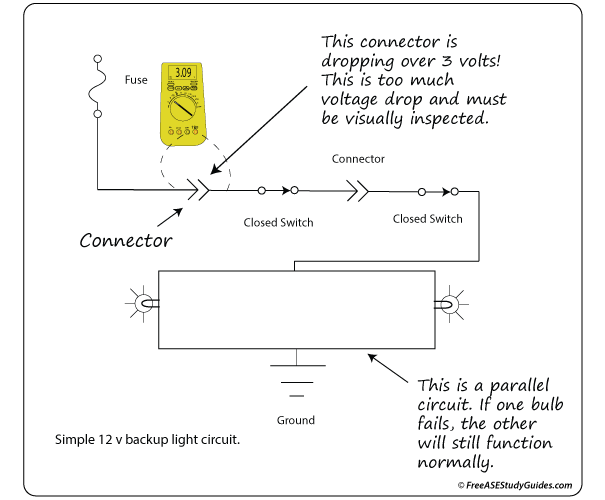
Voltage drop is the voltage lost as it passes through a component or resistance in a circuit. Voltage must be present in a circuit to perform the test. It’s the difference between the voltage at the source or battery and the voltage at the component. The voltmeter leads are connected in parallel with the circuit being tested.
Terminals and Connections
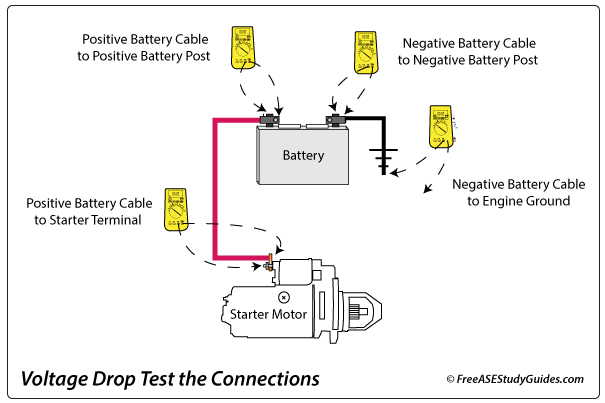
It’s common to perform a voltage drop test on the starter circuit. Test the battery cable terminals and connections to the battery posts, engine block, and starter terminal. Terminals and connections should be clean and tight-fitting with little or no discernible voltage drop.
Starter Cables
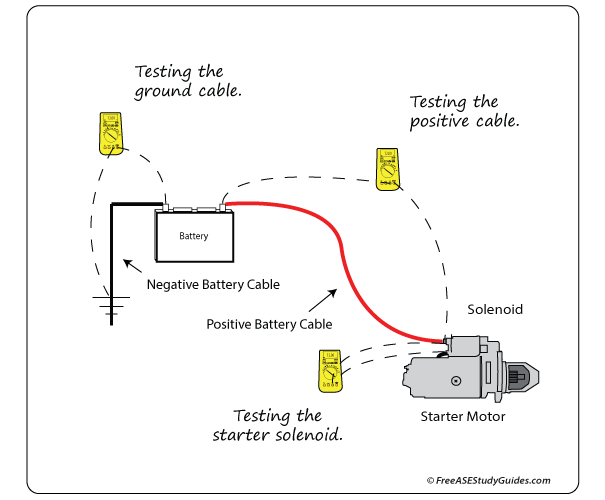
Most of the time, the battery or a loose connection causes a slow-cranking engine. A voltage drop test is the best way to find high-current circuit resistance. Test the positive battery cable, negative battery cables, and the starter solenoid. Check these readings against the manufacturer’s specifications. Some inexpensive replacement battery cables may have thicker insulation and less conductor than the original cables.
Starter Voltage Drop Test
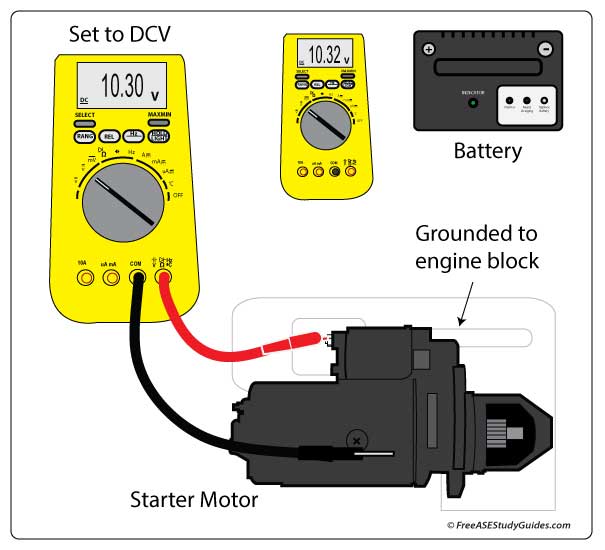
To check a slow-cranking engine for starter voltage drop, the engine, battery, cables, and connections must be in good working order. Disable the ignition or fuel and monitor the battery and the starter voltage while cranking the engine. The readings above are about the same, indicating a faulty starter motor.
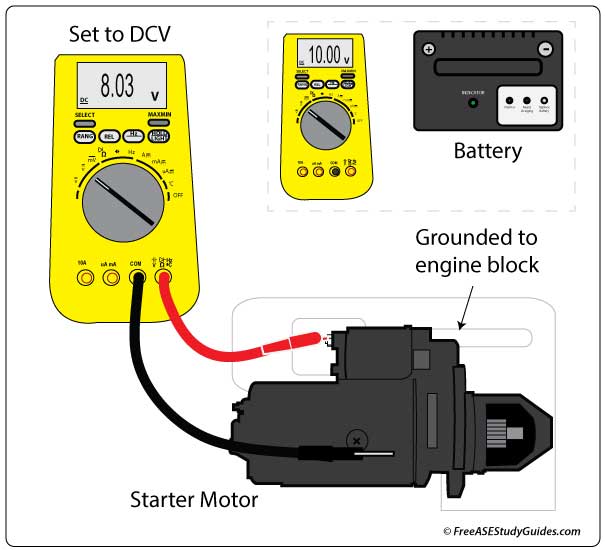
The starter should consume the circuit's voltage, not the cables and connections. If the readings are the same, the starter is faulty. Though it consumes all the voltage, internal problems like resistance, worn brushes, and bad bushings are causing it to turn slowly. If the readings differ, check the mounting and cables for resistance and the terminals for corrosion and loose connections.